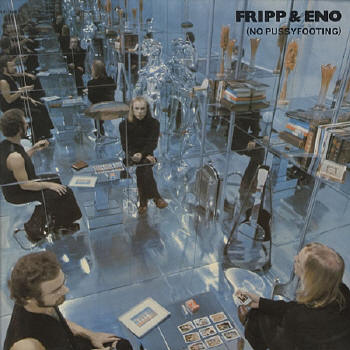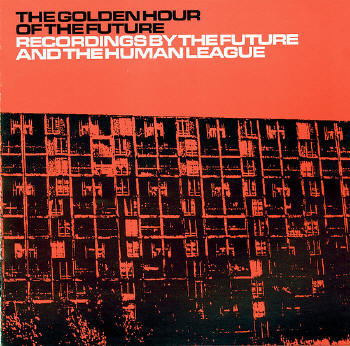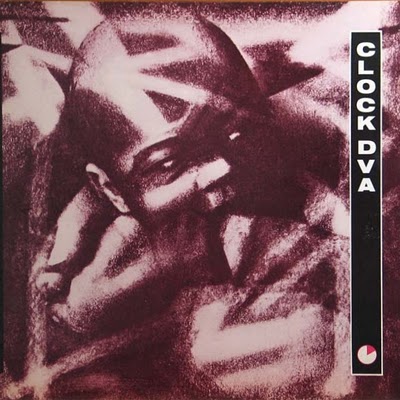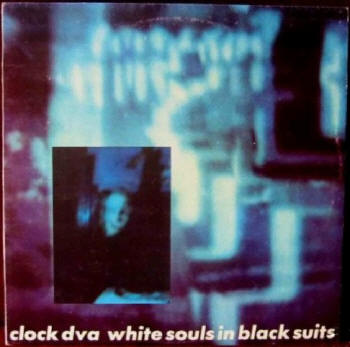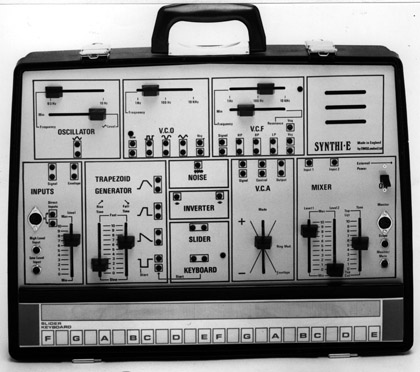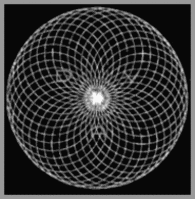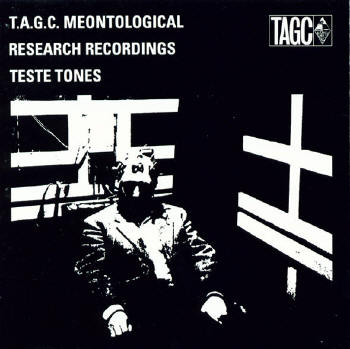|
|
| home | features | reviews | interviews | profiles | webprojects | links | archive | forum |
|
Adi Newton on Pataphysics, ClockDVA, Electronic Music and Sheffield
Sheffield was at that time a cultural wasteland. But within the centre of Sheffield, just off the infamous West St, stood some Victorian former education buildings, part of which was occupied by the anarchic arts theatre project known as 'Meatwhistle'. 'Meatwhistle' filled a unique gap and gave inspiration, support and guidance to many who created and enjoyed their time there. Meatwhistle was a 'Thelemic Castle' for those early pioneers of Electronic, Ambient, Industrial, Minimal, Electro etc music. Meatwhistle was not a material resource but more a mind space where concepts and ideas could be given full reign and experimented with. In fact the Rabelaisian slogan 'Fay ce que vouldras' (Do as you will) describes the philosophy of Meatwhistle. Instead of the theatrical experiments explored there, some of us went into the realm of sound with an ensemble named 'The Dead Daughters'. Existing for one fleeting performance this surrealistic trio featured Martin Ware, Synthesizer, Ian Craig Marsh, Synthesizer, and myself on Tape Machines, tape loops & treatments. No recordings or any other form of documentation exists apart from vague memories of a night that remains shrouded in mystery. What did evolve from this formation however was the more advanced group-conception known as 'The Future'. The main concept of which was the development of a totally electronic based music group, void of conventional instrumentation and without the egocentricity of personalities.
My influences were in the most part influenced by the Modern art movements of Europe and America. Artists like Francis Bacon, Marcel Duchamp, Alfred Jarry, Antonin Artaud etc have been a constant part of my development. I would also say the role of film has been and still is a major influence to me: the work of Tarkovsky, Carl Dreyer, Kurosawa, Deren, Anger to name a few. My perspective is that of a painter. Thatís what I am and still remain. My work became a multimedia practice without my intention to make it that. It is essentially visual and conceptual. The side of it expressed through sound is part of the media disciplines/techniques I employ to create the work. So to me, my influences have a wide topography, thatís why I never focused on the UK, but looked to Europe and America and the rest of the world.
Bowie's 'Low' came at the right time blending the European electronic atmospheres of Harmonia/Mobius/Rodelius/ Kraftwerk with a pop aesthetic. It was a inspiring amalgamation. The albums Heroes and particularly Iggy Pop's The Idiot were great personal favorites of mine. All these albums still retain a great power, and a longevity that is missing in their work now. Georgio Moroder/Donna Summer's 'I Feel Love' owes a great debt to Kraftwerk. It was also a sound distinct from New Wave/Punk that signaled the new emerging electronica.
Before Kraftwerk my early influences came from the works of 'White Noise'
featuring Delia Derbyshire and David Vorhaus from the Radiophonic workshop,
Scott Walker's 'Tracks on Night Flights', early Ultravox/Jon Foxx era 'Systems
of Romance' and the solo work of Edgar Froese of Tangerine Dream (the album
'Aqua' for instance with its use of binaural recordings). Also the early
electronic pioneers, like John Cage, Ilhan Mimaraglo, Lamont Young, Laura
Speigel, et al.
Coming back to Martyn
Ware and Ian Craig Marsh: can you expand on your personal involvement, with both
them and Cabaret Voltaire? As part of this we developed a system of democratic writing, called C.A.R.L.O.S.: a cyclic and random lyric organisation system, a kind of word permutation technique that relates to similar techniques such as the one developed by Brion Gyson and William Burroughs. With this technique a cyclic vocal arrangement was also employed to overcome the convention of a lead vocalist.
'The Future' did however create several interesting and advanced tracks such as
'Future Religion', 'Looking for the Black Haired Girls' (based around the
notorious NYC serial killer 'Son of Sam' in the summer of 1977) 'Blank Clocks',
and 'Almost Medieval' which was later developed and appeared under the same
name and structure in the Human League canon as did the track 'Dancevision'. The
Future original of which is far better technically from the playing aspect that
the more produced version that appeared again under the Human League output.
(see 'Golden Hour of the Future' also (picture above)). My involvement with Cabaret Voltaire was primarily as a friend, as we all use to hang out together at various places around West St in the centre of Sheffield. This area was the alternative or more left field area so we used to socialise in and around there. I had my studio just off West St where we had the Gun Rubber office and later developed a studio for The Future and then ClockDVA. Later Cabaret Voltaire also set up their Western Works studio, just off West St. ClockDVA recorded a number of tracks at Western Works, including 'Anti Chance' on the DVA Album 'White Souls In Black Suits' a collaborative piece based around indeterminacy. Chris Watson of Cabaret Voltaire was the one who was more aligned to what can be described as classic avant garde techniques, so this piece is essentially more a collaborative experiment between myself and Chris. I have also worked with Richard H Kirk on the production of the TAGC 12 inch 'Ha/Zulu' and some TAGC remixed tracks that have remained unreleased. Steven Turner and I recorded the track 'Uptown Apocalypse' for the B.E.F./HEAVEN 17 album 'Music For Stowaways' for Martyn Ware, Ian Craig Marsh. I think this is the sum of my collaborative relationship.
The Human League quickly developed a more ordered and accessible music. Music
that challenges is more difficult, and consequently not as accessible or
commercially exploitable. For me the use of indeterminacy or chance, or the
engagement of intuition, is still a vital element in creative work The improvisation work explored on 'White Souls in Black Suits' is a direct example of this, first released on Throbbing Gristle's Industrial Records label as a cassette release only. The album deals with themes of Existential and Surrealist philosophy and Alchemical Mysticism. The album is taken from fifteen or so hours of improvisational sessions recorded via a mobile recording unit. The album was mixed and produced at Cabaret Voltaireís Western Works studio. The album includes a tape chance montage sequence in collaboration with Chris Watson who also helped mix and co-produce along with Richard H Kirk and Stephen Mallinder in collaboration with DVA. On 'Thirst' (album cover above) these methods are refined and more sophisticated but still retain that content of intuitive spirit a inner soul if you like. After 'Thirst' I became interested in the possibility of creating a more sophisticated hybrid with a higher production level.
For three years prior to 'White Souls in Black Suits', the first publicly perceived official album of ClockDVA, myself and co-founder Steven Turner worked intensely on experimental techniques and composition with an electronic synthesis basis, always documenting and recording our works for archival resources. As early as 1978 The Anti Group Foundation (TAGF) was instigated, its aims and projects documented, and the basis of several works recorded.
The planned filming of the TG Crypt performance was unable to take place when the Arts Council withheld the video equipment on the day of the concert (which previously I had arranged) for reasons which have never come to light. During this early period the ill-fated 12 EP 'Sex Works beyond Entanglement' was recorded for Small Wonder but not released as Small Wonder deliberated over its release for over a year, and in many ways altered the chronology of DVA releases.
Many other works that gained only limited release via ClockDVA's private label DVAtion were only heard by the few. These included John Balance, a early supporter and admirer of DVA's music at this time. While he was at boarding school John wrote and produced the fanzine 'Stabmental' which ran 2 articles on DVA. One of the DVA tracks was 'Coil' which was from the unreleased 'Sex works beyond entanglement' 12'' EP. The title was later to become the name of the group John Balance formed with Peter Christopherson. I considered John as a very special person. I stayed with him in Brighton when he was at the Polytechnic and we corresponded over a great period of time, so when he asked me if I minded that the title was used for the group name, I was honoured. It's still a great source of honour to me to think that this original and innovative group was in a special way connected. When DVA appear as an electro-acoustic 5 piece it is without that process, without that history, so the true nature of DVA is closer to 'Buried Dreams' than it is to 'Thirst'. With the release of 'Horology' the DVA archive album with the material from 1977/1980 and its associated documentation, the position of ClockDVA will begin to be understand and realised, and the true history and influence of DVA .
At one point I was directing and organising an 8 piece ensemble then I was
operating singularly. TAGC's function is not necessarily to produce sound or
music-based work but to expand on these mediums, film or written documentation,
research and development of ideas, performance, installation, etc. The
orientation is derived initially from Alfred Jarry's Pataphysics and statements
made by Andre Breton, in the Manifest du Surrealisme 1930, when he took up
almost to the letter the formula of Hermes: 'Everything leads us to believe that
there exists a spot in the mind from which life and death, the real and the
imaginary, the past and the future, the high and the low, the communicable and
the incommunicable will cease to appear contradictory'. (Quoted in the sleeve
notes of TAGC, first release 'The Delivery').
So the Electronic Music of the late 70's in its early form was experimental in the sense that it was exploring new possibilities due to an available technology. But counter to this, true experimental composers had been in many ways creating similar kinds of sounds and sequences with less advanced systems and in some cases without. Iím thinking here of John Cage, Conlon Nancarrow, Earle Brown, etc and on the other side Charles Dodge, Raymond Scott et al. I believe however that it is still the role of original thinking that remains central. I have used computer systems since the late 70's and still do, and there are many positive aspects which are of a great benefit. But I wonder what would happen if they all disappeared. I used tape recorders and tape loops, and tape delays prior to synthesizers and computers, and I would say they created some of the best and most original forms of sound. In 1985 I bought a number of bits of test equipment, like beat frequency oscillators, and signal generators which where used on the TAGC recordings Meontological recordings record 1+ 2 Test Tones. The first synthesizer I bought in 1978 was the EMS Synthi E. built into a suitcase, it was designed to apply acoustics to electronic treatments (picture above). I still have this and use it from time to time.
The Audio Visual works that we are engaged on now utilise Advance Computer aided
elements as well as elements derived by a more psychical means. A combination
integration of both a kind of alchemy of old and new conceptual and material
realisations.
When we say expanded cinema we actually mean expanded consciousness. Expanded cinema does not mean computer films, video phosphors, atomic light, or spherical projections. Expanded cinema isn't a movie at all: like life it's a process of becoming, man's ongoing historical drive to manifest his consciousness outside of his mind, in front of his eyes. One no longer can specialize in a single discipline and hope truthfully to express a clear picture of its relationships in the environment. This is especially true in the case of the intermedia network of cinema and television and internet, which now functions as nothing less than the nervous system of mankind. The prevailing messages of the so-called popular media have lost their relevance because a socioeconomic system that substitutes the profit motive for use value separates man from himself and art from life. When we're enslaved to any system, the creative impulse is dulled and the tendency to imitate increases. Thus arises the phenomenon of commercial entertainment distinct from art, a system of temporarily gratifying, without really fulfilling, the experiential needs of an aesthetically impoverished culture. The mass public insists on entertainment over art in order to escape an unnatural way of life in which interior realities are not compatible with exterior realities. Freedom, says Brown, is fusion. Life becomes art when there's no difference between what we are and what we do. Art is a synergetic attempt at closing the gap between what is and what ought to be. For me the entrainment of Visual and Audio expression is a creative need.
We have recently had the green light on developing the occultist Michael Bertaux's paintings into film and we are in the process of collaborative work on audio-visual material. We have some good friends who are organising and producing Michael's new book 'Voudon Cartography' and we are planning to coincide a TAGC installation piece based on the Meontological Research recording 3 and the exhibition of Michaelís paintings later this year in London. New TAGC recordings are based around historical wax and cylinder recordings taken from medical and scientific research areas as well as recordings from other resources such as the Cahiers du CollŽge de Pataphysique. New works will centre around the ideas proposed by Alfred Jarry concerning Pataphysics as explored in his writings, most notably in the 'Exploits and opinions of Dr Faustroll, Pataphysician', 'How to construct a time machine', and the novel 'Days and Nights'. Alfred Jarry, whose work prefigured the Theatre of the Absurd, Dada, Surrealism and Futurism also may have anticipated certain modern physics theories. Jarry is most famous for his satire/farce Ubu Roi (King Turd), which ignited a scandal when it was first performed in 1896, and hasnít exactly been embraced by the mainstream in the century since. He is also known as the founder of 'Pataphysics'. 'Pataphysics', Jarry wrote, 'is the science of imaginary solutions...extending as far beyond metaphysics as the latter extends beyond physics.' The science of imaginary solutions. Two notions were behind Pataphysics: that of equivalences and the clinamen or slight decline of atoms falling. In 1893, Jarry attributes to Ubu Roi the invention of Pataphysics, 'a science that we have invented and which is generally felt to be needed', but the real founding text is another: 'Les Gestes et opinions du docteur Faustroll, pataphysicien', a work finished in 1898 and published in 1911, four years after Jarry's death.
Book II, titled 'Elements de pataphysique' only occupied two pages but is of
primary importance because it contains the first definition of Pataphysics:
'Pataphysics is the science that added to metaphysics, either in itself or
outside itself, and extends as far beyond metaphysics as the latter extends
beyond physics. Pataphysics is the science of imaginary solutions that
symbolically attributes to the feature the properties of the objects described
according to their virtuality'. The doctrine cannot actually be explained. Let
us add that this science is also presented as the science of the particular and
it deals with the rules governed by exceptions. Naturally the rule is 'an
exception to the exception'. In other words, everything is pataphysics. The
pataphysical dialectic revolves around itself like the ubic (spiral-shaped)
navel that is its emblem.
|
|
|


